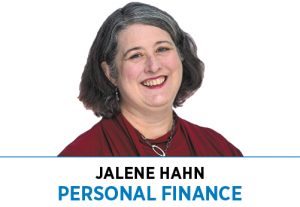Subscriber Benefit
As a subscriber you can listen to articles at work, in the car, or while you work out. Subscribe Now Depending on what statistic you find, between 55% and 63% of Americans are living paycheck to paycheck. Even those earning over $100,000 are not immune.
Depending on what statistic you find, between 55% and 63% of Americans are living paycheck to paycheck. Even those earning over $100,000 are not immune.
Reasons for living paycheck to paycheck are as individual as the people themselves. In some instances, it is simply not having sufficient income to cover the basics. For others, it’s a scarcity mindset or self-esteem problems that lead to overspending. And for many, it is simply a lack of financial literacy and just not knowing how money works or the long-term impact of various choices.
While it is true a high income can go further than a low income, financial stability is ultimately determined by your spending choices. In many cases, financial stability is a choice, either consciously or unconsciously. Spend less than you make, plan for emergencies, and understand some of the psychological triggers that lead to overspending.
I see it with young people just starting out. They buy a nice car, live in an expensive apartment/house, or indulge in other luxuries an entry-level salary can’t sustain. I’ve been there. When I started out, I had a basic entry-level salary and was trying to keep up with engineers making substantially more than me. Fortunately, my husband worked with me so that we could intentionally live on one salary. Our three-to-five-year house has turned into a 35-plus-year house.
For many people, an increase in income leads to a more expensive lifestyle. The trick is to save more with each pay increase. If your pay increase goes into spending and not saving, you will likely remain broke. I found a tip that helps visualize discretionary spending: If you want something, put the equal amount into a savings jar. It’s a visual reminder of how much you are spending that could be used for savings or debt repayment. If you cannot match your spending, you cannot afford whatever you wanted.
Examine the triggers of why you want to buy something. Retail therapy is a way to combat feelings of anxiety, depression or anger. With the advent of internet shopping, this can quickly escalate. I gave one client a sticky note for her to put on her computer. It simply said, “Empty the shopping cart.” She gets the dopamine rush of putting items in the cart but empties it before she overspends.
Setting realistic spending targets is not always easy. One popular budget plan proposed by Elizabeth Warren is the 50/30/20 plan. Warren suggests splitting your monthly income into three categories:
◗ Fixed expenses—50%. These are survival needs—a safe place to live, transportation, food, basic insurance and clothing.
◗ Non-essentials—30%. This is discretionary spending—wants like TV, morning coffee, hair appointments, vacations and eating out.
◗ Savings—20%. This covers an emergency fund, retirement savings or debt repayment. If you have debt, start putting a debt-reduction plan in place. If 20% doesn’t cover minimum debt payments, scale back on non-essentials. More than likely, debt didn’t accumulate overnight, and it will not dissipate rapidly, either.
One of the most valuable assets a person has is their ability to earn. This is called human capital. Education, training and being a reliable employee are ways to improve your earning power.
If you just have a job, figure out what it would mean to have a career. Investigate what it takes to get to the next level. If others are being promoted and you are not, find out what skills or personality traits need to be improved. In most instances, no one else is looking out for your best interests. You need to be your own advocate.
In most instances, you can get off the paycheck-to-paycheck cycle. It might not be easy or quick, but it is possible. Figure out exactly where your money goes, decide if it is making you more financially stable and take a baby step toward improving.•
__________
Hahn is a certified financial planner and owner of WWA Planning and Investments in Columbus. She can be reached at 812-379-1120 or [email protected].
Please enable JavaScript to view this content.

“One of the most valuable assets a person has is their ability to earn.”
The communists aren’t going to like this. Their philosophy is “one of the most valuable assets a person has is their willingness to steal others’ earnings.”